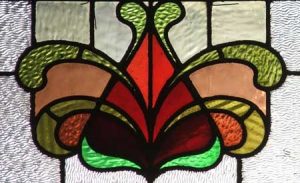I recently received an email from a reader who asked, “Is there a correct, careful way to handle a book so as not to damage it? That is–is it possible to be both a book collector and a reader of the books or should those two hobbies be completely separate?”
The answer is that it’s possible to read the same books one collects!
Since the difference between a book in fine condition & one that’s just very good is very small, it doesn’t take much to knock a book from one grade to another. But, if handled carefully, a new book can retain its condition & value.

How To Safely Read A Book
1. Read with clean hands.
2. Keep food and drinks away from the book. In addition to the damage that can be caused by stains & spills, any small crumb or organic material left inside the book can attract insects, which may do even further damage.
3. Keep the book away from sunlight and dampness.
4. Don’t use bulky bookmarks, which can damage the book when it’s closed. And don’t dog-ear the page, or leave the book open & face down to save your place. Don’t use Post-It Notes, as they can leave an invisible residue on the page. Just use a slip of plain white paper to mark your place.
5. When you’ve finished the book, check to make sure any book marks have been removed. (Non-acid-free paper left in may cause damage to the pages.)
6. Avoid opening the book widely, as this can cause damage to the spine. Open the book only as wide as necessary to comfortably read the book.
7. Carefully turn the pages, avoiding wrinkling or dimpling the paper when doing so.
8. Take care not to wrinkle or otherwise damage the dust jacket; it represents a large portion of the book’s value.
9. Consider putting the dustjacket into a Brodart (or similar) book jacket. They are made of a clear, archival material and slip right over the book’s dustjacket without attaching to it or damaging it. You can find these at most large bookstores, where they cost only a few dollars for a package of several. Or, order them online (see links below).
10. Hold the book by both hands, or cradle it in your lap while reading. If it’s a paperback, don’t fold the cover back upon itself.
11. Keep your first editions out of reach of children.
Storing Books Safely
1. Keep books away from direct light, heat & humidity.
2. Shelve books of the same approximate height together; putting a tall book next to a short book can cause uneven stress upon the spine. Keep the spines aligned so that one book isn’t pushed back farther than the next.
3. Shelve books upright on the shelf, neither too tightly packed nor too loose. Leaning can cause the spine to go out of alignment, as can stacking books on their sides.
4. Try not to store books horizontally. If it is absolutely necessary to store a book upon its side, put as little weight upon it as possible. If you must stack books, be sure to rearrange the stack periodically to relieve the stresses upon the books.
5. When removing a book from the shelf, do not grasp it by the top of the spine or tilt it; this can cause damage to the book’s head and foot. Instead, pull it out by grasping it around the middle of the spine. You may need to push surrounding books slightly back, or reach above & behind the book to push it forward from its fore edge, to accomplish this. Then, realign the other books on the shelf.
6. Don’t keep books in plastic bags. They need to breathe, and plastic may trap moisture, encouraging mold, warping, and pests. The plastic may also react with the book. If you really want to store a book in a bag, there are better options – try a paper bag or wrap the book in paper, tissue, or plain cloth. Acid-free materials are always best. There are acid-free boxes, too. You can buy archival, acid-free materials for this purpose at these stores:
- Brodart On their site, under the “Supplies” menu, click “Archival Supplies” -there you will find “archival book jacket covers.” There are different kinds, but I think the “fold-on” type is easiest to work with.
- Bags Unlimited
Some bookstores sell pre-cut Brodart covers. Your local craft, art, or office supplies store may have such materials as well. Taking the care to store your books using archival materials will extend their lives.
7. Keep them clean! Even in a closed bookcase, books and bookshelves gather dust. Over time, they can get really dirty. Periodically, carefully remove the books from your shelves, and stack them somewhere out of the way. Clean the shelves and any bookcase doors. Then, as you put the books back in, dust them off with something soft, paying careful attention to the top edge.
There’s another solution: reading copies!
If you can’t manage all of this, don’t despair. Some folks just don’t have it in them to handle a book so carefully. One person I know just can’t seem to refrain from wrinkling or creasing paper when he holds it. He doesn’t even seem to realize he’s doing it – but papers and books he has read all show some obvious handling.
If that sounds like you – and there’s no shame in that! – consider these alternatives:
- If it’s available, buy a cheap paperback reading copy & leave the first edition safely protected on your bookshelf.
- If no paperback is available, buy a second copy of the hardcover to use as a reading copy. Perhaps you can even find one at your local used bookstore.
If you are unsure of your ability to very carefully handle your first edition, using a reading copy will allow you to protect it from the hazards of reading.





Mary Taylor says
I have a number of first editions that are wrapped in Mylar film and I just discovered the book shelves in the den have been subjected to too much humidity and the jackets on some of these books have rippled. Is there any way to repair the damage?
Denise says
Hi Mary,
Unfortunately, I know of no way to reverse this kind of damage.
Ben says
I’ve been collecting rare, signed, numbered, limited books for about twenty years. Since I live in Florida, we have a major silverfish problem. Of course, silverfish are just about everywhere. So I bought Brodart’s archival quality zip-lock bags. I’ve never had a problem with moisture, dryness, etc… If you’re worried, then open the bag once a month for a little while to let the book breathe. I’ve seen so many books worth tons of money destroyed due to silverfish. Even pest control can’t help much with that. Archival quality bags are safe.
And since most of my books are rather extravagant, larger than normal books, and heavier than normal books, placing a book on its side for storage–as long as you don’t put anything else on top of it–is recommended by the specialty book publishers, as it takes a lot of weight off the spine. I guess I’m the exception due to this.
Denise says
Storing books on their side, on a level surface with nothing on top is fine. Since that takes a lot of room, though, most people who lay books horizontal stack other books on top — and that’s what throws spine alignment out of whack.
Do be careful with those bags! While archival materials will not destroy books through a chemical reaction, they may still damage the book. Not all archival materials are meant for long-term book storage.
The issue with bags which seal completely is not always with the material they’re made of, but that they can seal in moisture, which can cause damage over time.
Similarly, paper will deteriorate if kept in too dry/warm an environment. I have seen books which were destroyed by both of these storage methods: mold and mildew, wavy pages, dried out or browned paper, etc.
It’s important to keep books away from pests, but some methods of protection can also be destructive, especially over time. Issues may not be noticed right away, but may be discovered later on, when it’s too late.
It might also be a good idea to look into some pest control solutions.
Yvonne says
I just finished putting all of my dad’s old and rare Bibles in Ziplock bags. I am going to go unzip them all after reading your article. Thanks!
Denise says
Let ’em breathe!
To protect covers, you could always wrap them in mylar film: http://www.shopbrodart.com/Library-Supplies/Book-Jacket-Covers/Film-Rolls/
Brendan says
Hi Denise,
I just wanna ask why keep books out of direct sunlight? I read somewhere else that sunlight kills mold or helps prevent it. Some of my magazines have mold/mildew/foxing and I have placed some of them in the sun to help kill whatever is present on my magazines. They are part of a collection, so can not be removed or thrown away.
Denise says
Hi Brendan,
Sunlight can fade the covers of books, and may (depending on the paper used) cause the pages to darken. However, as you know, ultraviolet light (sunlight) can indeed kill mold/mildew. So, it’s a trade-off.
Mold and mildew will spread from one book (or magazine) to another so it is best to keep any affected books quarantined from healthy books. It may not be possible to remove all mold or mildew, and if there are any spores still alive your other magazines could be affected.
Good luck!
Jessica Roberts says
Very interesting post! My kids have so many books that I don’t know how and where to store them. It is good to read those suggestions.
Patsy says
thank you so much for the information. I was about ready to put the book
in a ziplock plastic bag and store it. I have a 1959 Signet Classic
“The Adventures of Huckleberry Finn” it cost 50 cents back then.
So putting it in a paper sack will keep it from getting brittle and fall
apart.?
DeniseE says
Hi Patsy,
Thanks for visiting EM!
A paper bag should be acid-free; if it’s not, the acid in the bag could react with the book, darkening it and making it more brittle.
There are several ways to protect your book:
1. Ziplocs are polyethylene. Polyethylene is pretty safe for books. But, the problem with a Ziploc is that it’s airtight. If sealed, your book will likely either become very dry (and brittle) or it will retain moisture, which can also damage the book (and potentially even cause mold). If you must use a ziploc, either don’t seal it, or punch some a few holes in it to let it breathe.
2. There’s another option. Polypropylene bags are a crisp, clear plastic. It’s usually what comic books are stored in. They generally come with a flap that folds over; some are self-stick and others are not. These are sometimes called OPP bags. (I don’t like getting sticky stuff anywhere near my books but I often use the self-seal type and just fold them over.) Simply folding the flap over (not too tight) allows a little air to get through so the book can breathe.
3. There are also polypropylene or mylar films that you can wrap around the cover; since the cover is the most likely area to receive wear this can be helpful.
4. Alternatively, you could place the book in a small acid-free cardboard box. (Craft stores often have them for storage of scrapbooking paper or photos.) Or, it could be wrapped in some acid-free tissue paper.
If you’d like a free OPP bag or two, just email me (from here: https://www.emptymirrorbooks.com/get-in-touch and let me know your mailing address. I have tons of them here. :-)
all best,
Denise
Mylar (Archival Polyester)
There are sleeves made for books to go in.
Jonathan W. Phillips (Real Estate Historian) says
Acid papers contain sulfur, which reacts with moisture and air, so it is better to be dry than moist. Frequently old books will have mold cultures that are already established. Molds need food and water to thrive. Glues and bindings in a moist environment provide both. Molds also spread when conditions are favorable. Basement and garage sale books are notorious in this regard. Many library deaccessioned books are cut for conditions as well as low circulation. Foxing is a hazard. Please discourage people from placing clippings or flower pressings inside books. Also, not a good idea.
Preservation boxing of vulnerable books is a safe middle road. But certain sulfur bearing pulps and volatile binding agents will continue to darken and go brittle if not neutralized even in the most carefully constructed environments.
Good work on your site and helping people to understand that books have passive needs that need to be respected if they are to last well.
Cathy McIntosh says
Very good information. I am a recent bookseller on Amazon and really appreciate all the information that your website provides and the links to others.
Margaret says
I liked reading this article. I’m sure these tips will go a long way. I am a voracious reader and have a lot collectibles right from my school days. Since we are living in a rented apartment and we frequently need to move, I keep my book assets stored in a professional self storage unit. I usually keep visiting the storage every now and then, to make sure my books are in good condition. Even though initially I was doubtful about this move, it worked for me.
Denise Enck says
I’m glad you found a solution that works for you, Margaret! It must be difficult to live separated from your books, though – I hope you’re reunited with them soon. :-) Thanks for your good words about the article.
Lani says
I am a book collector, and I am very meticulous and protective when it comes to books. Even the slightest detail, I manage to notice it. I want to keep my book as new as possible and so I take great care of them. This is just a useful article for bookworms like me. I have one question though, this part of the book gives me a headache, as I don’t know what to do with it. Do you notice the edges of the book? The side opposite to the book spine, I want them not to fade but for some reason no matter what I do, it becomes brown, perhaps from something in my environment? Perhaps dust, etc.?
Denise Enck says
Take a look at my comment below! Thanks.
Marie says
I am a book collector and I am very meticulous and selfish when it comes to books. Even the slightest detail I managed to notice of it. I want to keep my book as new as possible and so I took great care of them. This is just a useful article for bookworms like me.
I have one question though, this part of the book gives me a lot of headache as I don’t know what to do with it. Do you notice the edges of the book? The side opposite to the book spine, I want them not to fade but for some reason no matter how I do it it became brown, prolly from dust, etc.
Denise Enck says
Hi Marie, thanks for your comment; I’m so glad you found the article useful. As for the brown page edges, it could be one of several things. Dust/dirt will do it, for sure. Keeping the books dusted will help some.
Sunlight can also also turn pages brown. This is especially true with paperbacks, which tend to be made with less expensive paper. Their pages will usually darken on their own over time, but sunlight will accelerate it. Keeping books out of direct sunlight can help.
Andrew says
Great information. Here is my situation: I live in an apartment with rather cheap carpet. The dust levels in my rooms are all pretty high. The CDs I have on a small bookshelf collect a layer of dust across the top if left unattended, so I would never even consider storing my books on an open shelf. I also don’t have a few thousand dollars lying around that could be spent on custom enclosed oak bookcases. I have come up a solution to this problem that slightly violates one of the above points. I purchased some metal shelving on Amazon (Gorilla Rack) and store my books in small boxes, about the size of USPS Priority Mail flat rate boxes. They hold around 5-8 paperbacks, 3-4 hardbacks per box. The problem is that you have to store books on their side, but I am careful to stack them all evenly, heaviest books on the bottom. I rotate them every few months. Some boxes only contain two or three books, so the weight is not so excessive that it would damage spines. This is not a long-term solution; I will be getting them onto proper enclosed book cases as soon as I can. But if you have a ten or fifteen nice editions that you want to protect from light and dust, I recommend it. Also, all my hardbacks are in Brodarts. I buy mine off eBay.
Empty Mirror says
Hi Andrew, Thanks for your comment. It’s a tough issue, finding the right storage for books. It’s great you have your books in Brodarts, and away from sunlight, and so long as you’re mindful of not putting too much pressure on the books horizontally they should be OK. I think rotating them sounds really wise too. Sounds like you’re taking good care of them!
For what it’s worth, I have a combination of open shelves a few (inexpensive, DIY from a chain store) barrister bookcases and an old china cabinet with doors. Even with the doors on the barristers & the cabinet, the books and shelves still get dusty over time. Dust creeps its way in wherever there’s a crack.
cheers-
Denise
Mark Hoult says
Good summary – thanks. I promise to take note of your very good point about how to take a book off the shelf. Guilty as charged.
Alissa says
A friend linked me to your site. Thanks for the details.